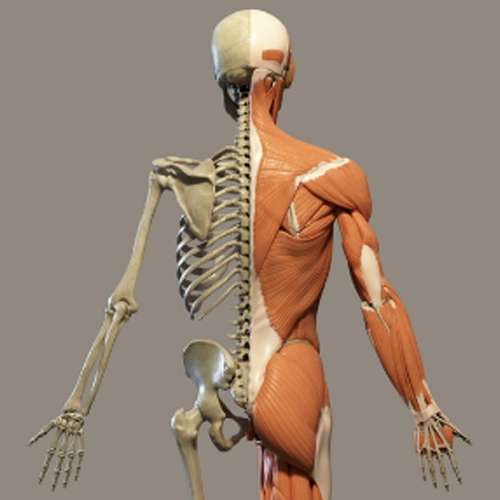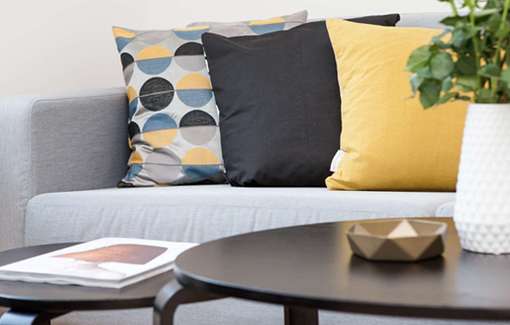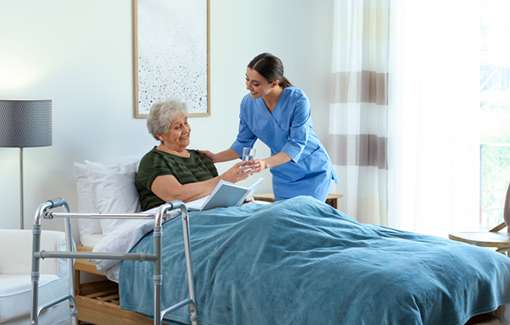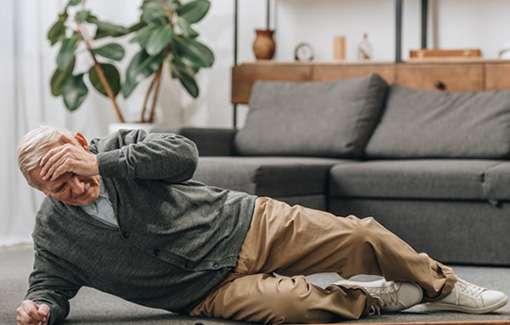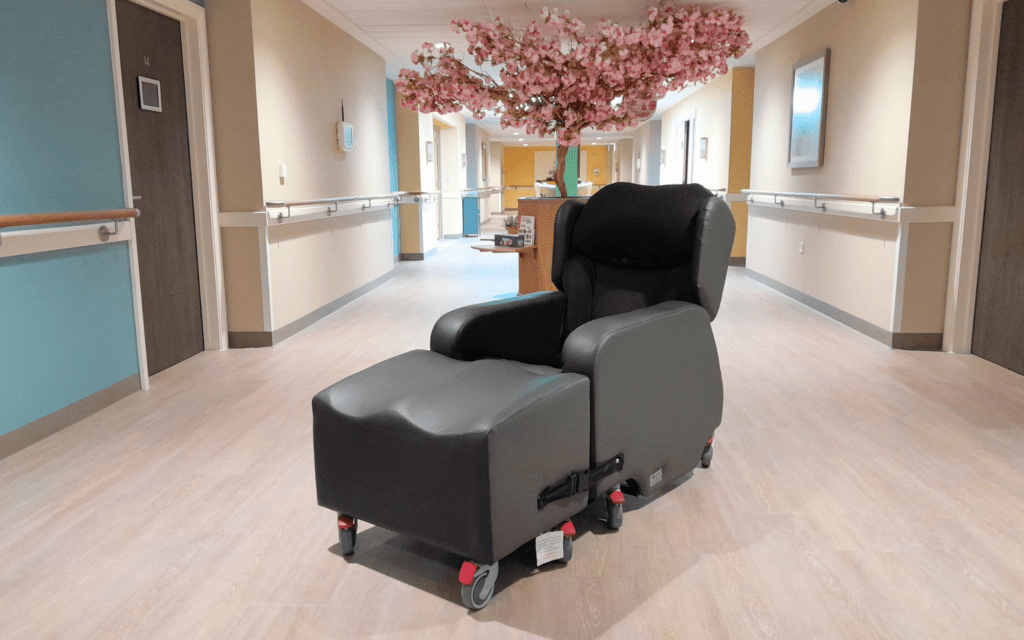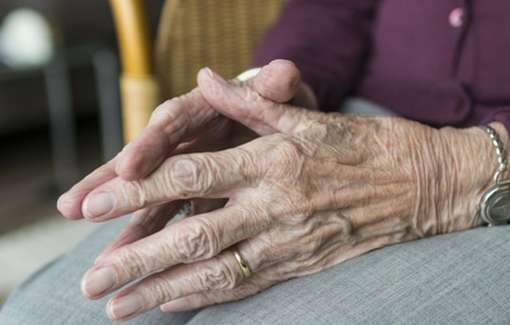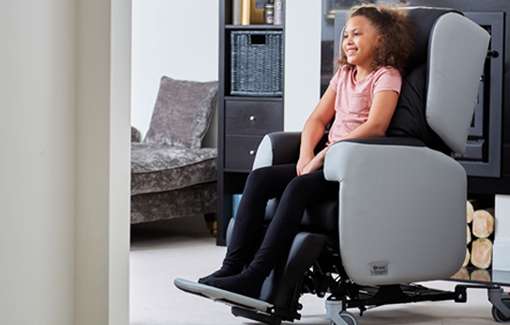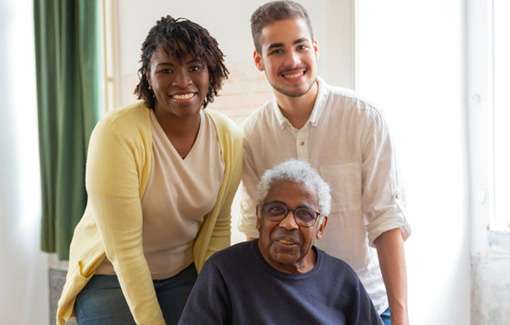There are many different types of muscular dystrophy (MD). Each type can have different symptoms, severity levels, and affect different areas of the body. This can make specifying specialist seating for someone with MD difficult. Each individual will have different care requirements.
However, there are still certain features you can look for in specialist seating to ensure people are properly supported. Follow this guide for advice on choosing the right chair for someone with muscular dystrophy.
Jump straight to…
What is muscular dystrophy?
Muscular dystrophy refers to a group of genetic conditions that cause muscle weakness.
There are over 40 recognised muscle-wasting conditions that come under the bracket of MD. Some of the more common muscular dystrophies are:
- Duchenne muscular dystrophy — Usually diagnosed in children aged 1 -3. Muscle weakness tends to occur in the legs and pelvis first, with other muscles wasting over time.
- Myotonic dystrophy — Can be diagnosed at any stage of life. Smaller muscles, like the jaw and neck, are usually affected first.
- Emery-Dreifuss muscular dystrophy — Symptoms typically emerge in childhood or adolescence. Muscle contractures (shortening) in the arms, neck and feet is an early indicator of this condition.
If you’re looking for more information about a specific type of MD, visit Muscular Dystrophy UK’s website. They have a full list of all muscle-wasting conditions.
Key symptoms to consider when choosing seating
As you can see, each of these conditions presents different symptoms. Someone with Duchenne MD might require a wheelchair whereas someone with Emery-Dreifuss MD may have difficulties lifting objects.
When choosing a chair for someone with MD, you should focus on the symptoms most likely to affect their posture or their ability to sit down and get up safely and comfortably.
There are four key things our specialists always consider when doing a seating assessment for someone with muscular dystrophy:
- The progression of their condition
- Their standing ability
- Contractures
- Spinal deformities
Progression
All types of muscular dystrophy are progressive. Unfortunately, this means they get worse over time. The affected muscles weaken gradually, resulting in more severe impairments and disabilities.
The progressive nature of MD is a key thing to consider when choosing a chair. Specialist seating is an investment. Buying a new chair every couple of years as their condition progresses simply isn’t an option for most people. It’s too expensive and disruptive.
Ideally, a chair for someone with muscular dystrophy will be flexible enough to support them for many years.
Standing Ability
It might not seem like it but sitting down and standing up again requires a lot of lower body strength.
Many people with MD can walk but find it difficult to stand up from a seated position due to their weakened leg muscles.
Having to wait for help getting up can be frustrating and feel restrictive. So, finding a chair to help with sit to stand movements can really enhance quality of life for someone with muscular dystrophy.
Contractures
Muscle contracture is when the muscles and tendons around a joint become shorter and stiffer. It is a common MD symptom which reduces range of movement in the affected area.
Contractures often occur in the neck, arms, hips, knees, and feet. They make it difficult to tilt your head or straighten your elbow etc.
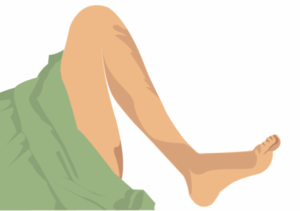
This illustration shows how someone’s leg can be positioned if they have a severe knee contracture
In terms of seating, contractures can make it very difficult to sit and stand. They can also cause incorrect posture and problems with sliding out of the chair.
Spinal Deformities
Often with muscular dystrophy, muscle wastage will not occur equally across both sides of the body. Muscles on the left-side may deteriorate faster than on the right-side, or vice versa.
This can lead to abnormal curvature of the spine and deformities like lordosis, scoliosis, or kyphosis. Learn more about the differences between the three conditions in this comparison guide.
Good seating for someone with muscular dystrophy must accommodate any deformities that cannot be corrected, whilst providing enough postural support to stop them getting worse.
Features to look for in chairs for MD
We’ve covered four of the main MD symptoms that affect sitting down, standing up, and posture. Now, let’s look at specific features which can be incorporated into specialist seating to provide support.
Adjustable levels of support
By choosing a chair with adjustable levels of support, you avoid having to replace the chair as the user’s condition progresses.
Lento Care Chairs have a completely modular design. The seat height, width and depth, footplate height, armrest height, and backrest cushion can all be quickly changed without tools. Plus, features like tilt-in-space, backrest recline, and articulating leg rest elevation all come as standard.
This high-level of flexibility is ideal for people with muscular dystrophy.
It allows you to easily adjust positioning, pressure relief and postural support to accommodate different symptoms and severities of MD over time.
Vertical Rise
Rise recliner chairs are specially designed to help people stand up safely.
However, many of these chairs rise and tilt the seat forward slightly at the same time. This kind of motion isn’t helpful for people with muscular dystrophy who have weakened leg muscles.
Instead of a standard rise and recline chair, you should opt for one with a vertical rise function. This means the seat stays flat whilst the whole chair rises upwards.
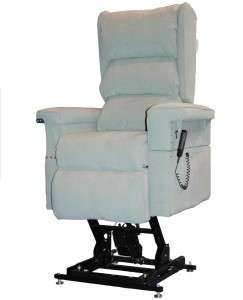
Here you can see the vertical rise of the Elevator Chair in action
Vertical rise allows the armrests to rise with the seat. It provides more stability and gives the user something to hold on to at the side of their thighs. For someone with weak legs, this makes it much easier to get their balance.
Negative legrest angle & split legrest
A negative legrest angle is essential for anyone with knee contractures. It allows the legs to be positioned back slightly under the seat. For someone who cannot straighten their legs, this is much more comfortable.
If someone only has knee contractures in one leg, you might want to consider a split legrest. This would allow both legs to be positioned comfortably with different knee angles.
Back angle recline
Having a reclining backrest helps someone with MD to maintain proper pelvic positioning, even if they have hip contractures.
It is essential that a person’s lower back remains in contact with their chair, so their body is properly supported. Getting this positioning right can be difficult for someone with a fixed hip position. But opening up the back angle of a chair allows them to get the support they need, whilst increasing comfort and minimising shear.
Tilt-In-Space
A tilt-in-space function allows you to tilt the seat back without changing the knee or hip angle.
This is great for anyone with a spinal deformity due to their MD. Leaning back take the pressure off any protruding areas of the spine, preventing pressure ulcers.
It also helps to maintain good head and neck positioning. Being tilted allows gravity to stop the head slumping to one side. This minimises the risks of worsening the spinal curvature.
For more information on supporting spinal deformities with specialist seating, check out these in-depth guides:
Book an assessment for complex contractures & deformities
There are a whole host of other accessories and options you can add to a chair to support muscle contractures and spinal deformities.
For anyone with severe or complex contractures/deformities due to MD, we strongly recommend an assessment with a seating specialist. They will be able to recommend the best model and set up a chair to perfectly suit individual requirements.
Treating these conditions incorrectly can cause further health problems. So, seeking professional help is advised.
The Yorkshire Care team have been providing specialist seating assessments for over 30 years. You can book a no-obligation assessment today.
What is the best chair for someone with muscular dystrophy?
Muscular dystrophy is a broad group of conditions. Care needs can vary greatly from one person to the next. This can make it difficult to specify specialist seating for someone with MD. In this guide, we covered the importance of choosing a chair that is flexible enough to work for an individual as their condition progresses. We also identified the features you should look for in a chair to support contractures, spinal deformities, and safe standing. Bearing all this in mind, we have three top recommendations for specialist seating for muscular dystrophy:
Best rise recliner chair for MD
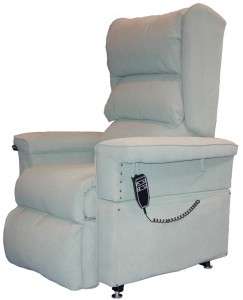
We recommend The Elevator as the best rise and recline chair for someone with MD
Best care chair for MD
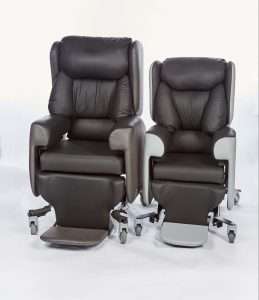
We recommend the Lento Care Chair range for people with MD who require additional support when sitting. The chair is available in child and adult sizes. This is helpful as muscular dystrophy affects people of all ages.
Best activity chair for MD
Activity chairs are a great option for anyone looking to maximise their everyday independence. For people with MD, an activity chair would need to offer easy manoeuvrability, comfort, and height adjustability. The Vela 700 activity chair is the perfect option for this.
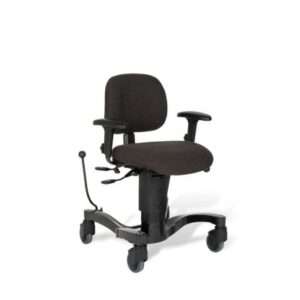
The Vela 700 activity chair is ideal for people with MD who are looking for something to help aid their independence in everyday life.
If you have any further questions about chairs for muscular dystrophy, please get in touch! One of our specialists will be more than happy to offer advice or an assessment.
To learn more about specifying seating for people with other medical conditions, like arthritis or cerebral palsy, download a free copy of our Specialist Seating eBook.





